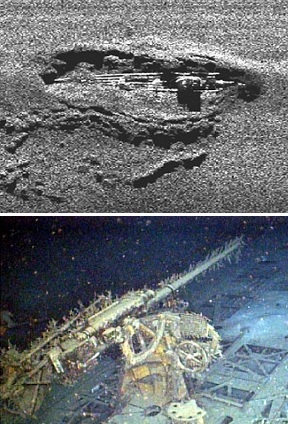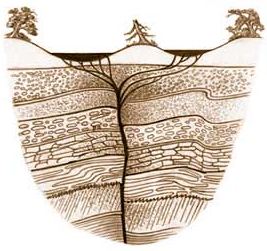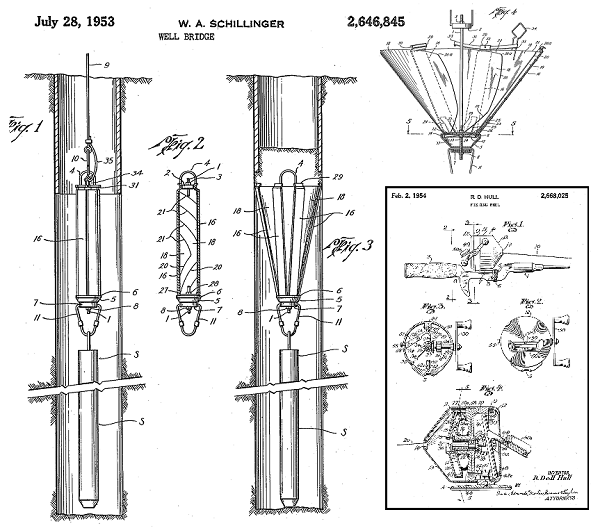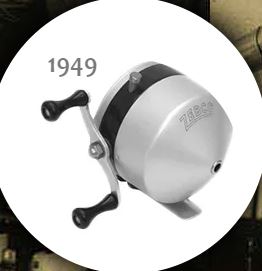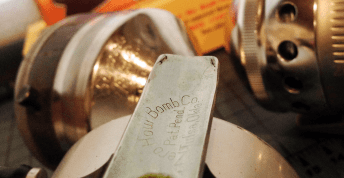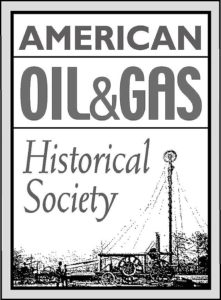This Week in Petroleum History: July 28 – August 3
July 28, 1924 – Oil Scouts form National Group –
The National Oil Scouts Association of America, later the International Oil Scouts Association (IOSA), filed its charter in Austin, Texas, bringing new standards to an important oilfield profession. Since the 1860s, oilfield scouts have gathered field intelligence on drilling operations, including often sensitive information about the operator, well location and lease details — anything that may yield a competitive advantage. These “night riders of the hemlocks” also sleuth drilling depths, geologic formations encountered, logs, and other data.
Learn more in Oil Scouts – Oil Patch Detectives.
July 28, 1953 – Final Oilfield Patent for Zero Hour Bomb Company
Manufacturer of oilfield products since 1932, the Zero Hour Bomb Company of Tulsa, Oklahoma, received its last U.S. patent relating to electric timer explosives for fracturing geologic formations. The service company patented its device for positioning blasting cartridges in wells — a “well bridge” that automatically opened, “when the time bomb or weight reached a position at the bottom of the well.”
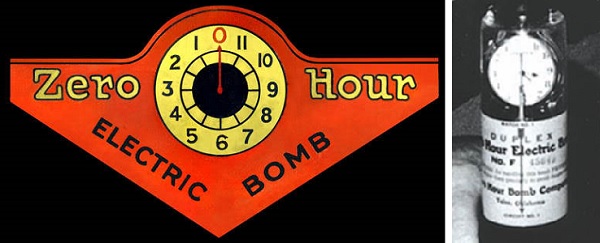
Oilfield service provider Zero Hour Bomb Company was founded in Tulsa, Oklahoma, in 1932. Photos courtesy Zebco.
The downhole apparatus was never built, because company executives already were manufacturing and marketing a new, “cannot backlash” fishing reel invented by Jasper “R.D.” Hull, who they had hired in 1947. Zero Hour Bomb Company changed its name to Zebco in 1956.
Learn more in Zebco Reel Oilfield History.
July 28, 1977 – Trans-Alaska Pipeline delivers Oil to Port of Valdez
The first barrel of oil from the North Slope’s Prudhoe Bay oilfield arrived at the Port of Valdez after an 800-mile journey through the Trans-Alaska Pipeline System.

The Trans-Alaska Pipeline delivered North Slope oil almost a decade after the Prudhoe Bay field’s discovery. OMAR refers to the Organization for Management of Alaska’s Resources, now the Resource Development Council for Alaska.
At peak flow in 1988, 11 pumping stations moved 2.1 million barrels of oil a day. The 48-inch-wide pipeline has been recognized as a landmark of engineering (see Trans-Alaska Pipeline History).
July 29, 1918 – “World’s Wonder Oil Pool” discovered in Texas
Less than a year after the “Roaring Ranger” discovered an oilfield to the south, the Fowler No. 1 well at the cotton farming community of Burkburnett, Texas, revealed a new giant field at a depth of 1,734 feet. Within three weeks, 56 rigs were drilling near the Fowler Farm Oil Company site along the Red River in North Texas.
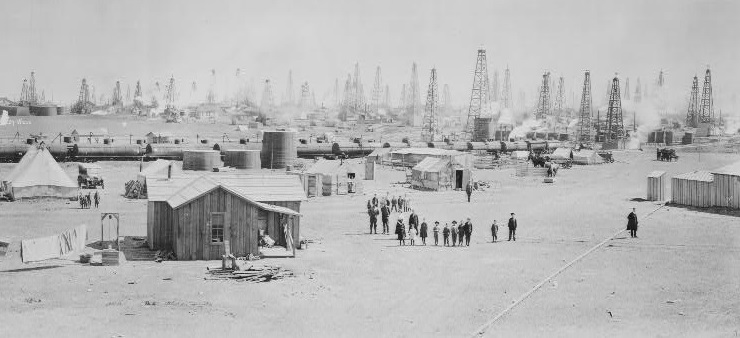
Circa 1919 photo captioned, “Burkburnett, Texas, the World’s Wonder Oil Pool,” showing eight months’ phenomenal development, viewed from the northwest side, opposite Fowler farm.” A. Newman Photographic Company photo courtesy Library of Congress.
Fowler’s decision to drill a well on his Wichita County farm had been called “Fowler’s Folly” until his oil discovery brought hundreds of oil companies to the county. By January 1919, Burkburnett’s population reached more than 8,000 people — with a line of derricks two miles long greeting new arrivals.
As the “World’s Wonder Oil Pool” made national headlines, teenager Clark Gable was a 17-year-old roustabout working in Oklahoma. Gable and Spencer Tracy would star in Hollywood’s version of Burkburnett oil history, the popular 1940 movie “Boom Town.”
Learn more in Boom Town Burkburnett.
July 29, 1957 – Eisenhower limits Oil Imports
As America’s reliance on foreign oil continued to grow — discouraging domestic production — President Dwight D. Eisenhower established a Voluntary Oil Import Program with import quotas by region. The intent was to ensure adequate domestic petroleum in case of a national emergency.
Using a presidential proclamation two years later, Eisenhower made the program mandatory. By 1962, oil imports were limited to 12.2 percent of U.S. production. The program continued until suspended by President Richard Nixon in 1973 as domestic oil production reached new highs during the OPEC oil embargo.
July 30, 1942 – U-166 sinks, discovered 60 years later
A Navy patrol boat attacked and sank a German U-boat in the Gulf of Mexico after the submarine had torpedoed a U.S. freighter. Despite being depth-charged, the U-166 was believed to have escaped — until a natural gas pipeline survey revealed it 59 years later.
The U-166’s identity was not learned until advanced geophysical survey technologies arrived in 2001, according to the National Oceanic and Atmospheric Administration (NOAA). The discovery resulted from an archaeological survey prior to construction of a natural gas pipeline by the British company BP and Shell Offshore Inc.
Remotely operating vehicles (ROVs) and an autonomous side-scan sonar revealed U-166 separated from its last victim, the Robert E. Lee, by less than a mile. BP and Shell altered their proposed pipeline to preserve the site.
With the petroleum industry the principal user of advanced underwater technologies for seafloor mapping, other World War II vessels have been discovered during oil and natural gas surveys.
Learn more in Petroleum Survey discovers U-boat.
August 1, 1872 – Iron Pipeline delivers Pennsylvania Natural Gas
The first large-scale delivery of natural gas by pipeline began when gas was piped to more than 250 residential and commercial customers in Titusville, Pennsylvania, home of America’s first oil well, drilled in 1859. An iron pipeline two inches wide carried the natural gas five miles from a well producing four million cubic feet of gas a day.
Investors, including the mayor of Titusville, had formed the Keystone Gas & Water Company to construct the pipeline and deliver “the most powerful and voluminous gas well on record.” The well produced into the 1880s, according to the Drake Well Museum and Park.
August 2, 1956 – Missouri builds First U.S. Interstate Highway
Missouri became the first state to award a contract with interstate construction funding authorized two months earlier by the Federal-Aid Highway Act. The highway commission agreed to begin work on part of Route 66, now Interstate 44.
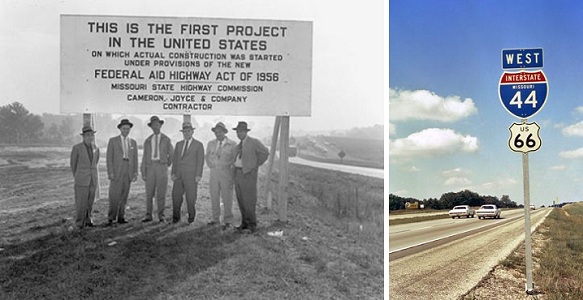
Missouri launched the U.S. interstate system after “inking a deal for work on U.S. Route 66.” Today, I-44 stretches across south central Missouri and is a major corridor linking the Midwest and the West Coast.
“There is no question that the creation of the interstate highway system has been the most significant development in the history of transportation in the United States,” proclaimed the Missouri Department of Transportation (also see America on the Move).
August 3, 1769 – La Brea Asphalt Pits discovered
A Spanish expedition discovered what would be called La Brea (the tar) pits on the West Coast. “We debated whether this substance, which flows melted from underneath the earth, could occasion so many earthquakes,” noted the expedition’s Franciscan friar in his diary.
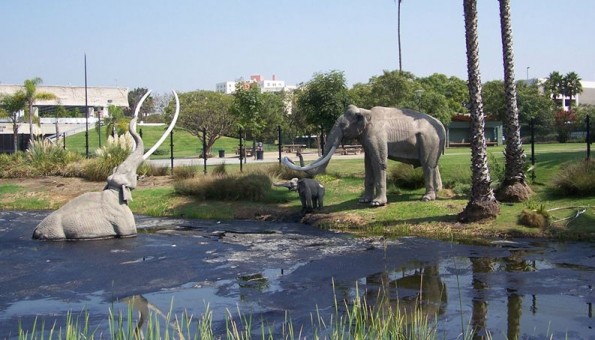
The Page Museum of Los Angeles offers life-size replicas of extinct mammals at the Rancho La Brea in Hancock Park. Although called the “tar pits,” the pools are asphalt.
The friar, Juan Crespi, was the first person to use the term “bitumen” in describing these sticky pools in southern California — where crude oil has been seeping from the ground through fissures in the coastal plain sediments for more than 40,000 years. Native Americans used the substance for centuries to waterproof baskets and caulk canoes.
Although popularly called the tar pits, the pools at Rancho La Brea are actually asphalt — not tar, which is a by-product made by the distillation of woody materials, such as peat. Asphalt is a naturally formed substance comprised of hydrocarbon molecules (see Asphalt Paves the Way).
Learn more in Discovering the Le Brea Tar Pits.
August 3, 1942 – War brings “Big Inch” and “Little Big Inch” Pipelines
War Emergency Pipelines Inc. began construction on the “Big Inch” line — the longest petroleum pipeline project ever undertaken in the United States. Conceived to supply wartime fuel demands — and in response to U-boat attacks on oil tankers along the eastern seaboard and Gulf of Mexico, the “Big Inch” and “Little Big Inch” lines were extolled as “the most amazing government-industry cooperation ever achieved.”
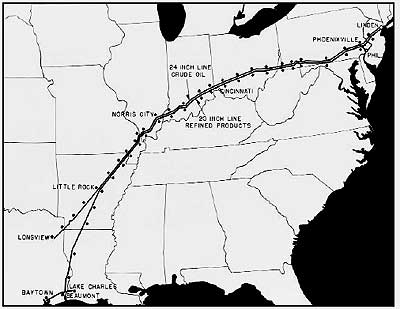
The longest petroleum pipeline project ever undertaken led to construction of a 24-inch pipeline from East Texas to Illinois, and a 20-inch line as far as New York City.
With a goal of transporting 300,000 barrels of oil per day, the $95 million project called for construction of a 24-inch pipeline (Big Inch) from East Texas to Illinois, and a 20-inch line (Little Big Inch) as far as New York and Philadelphia. The pipelines would reach more than 1,200 miles (the Trans-Alaska pipeline system is 800 miles long).
Learn more in Big Inch Pipelines of WWII.
_______________________
Recommended Reading: The Oil Scouts – Reminiscences of the Night Riders of the Hemlocks (1986); Trek of the Oil Finders: A History of Exploration for Petroleum (1975); Amazing Pipeline Stories: How Building the Trans-Alaska Pipeline Transformed Life in America’s Last Frontier
(1997). Early Texas Oil: A Photographic History, 1866-1936
(2000); Eisenhower: Soldier and President
(1968); The Extraction State, A History of Natural Gas in America (2021); Torpedoes in the Gulf: Galveston and the U-Boats, 1942-1943
(1995). The Big Roads: The Untold Story of the Engineers, Visionaries, and Trailblazers Who Created the American Superhighways
(2012); Monsters Of Old Los Angeles – The Prehistoric Animals Of The La Brea Tar Pits
(2008); Oil: From Prospect to Pipeline
(1971). Amazon purchases benefit the American Oil & Gas Historical Society. As an Amazon Associate, AOGHS earns a commission from qualifying purchases.
_______________________
The American Oil & Gas Historical Society (AOGHS) preserves U.S. petroleum history. Please become an AOGHS annual supporter and help maintain this energy education website and expand historical research. For more information, contact bawells@aoghs.org. Copyright © 2025 Bruce A. Wells. All rights reserved.


